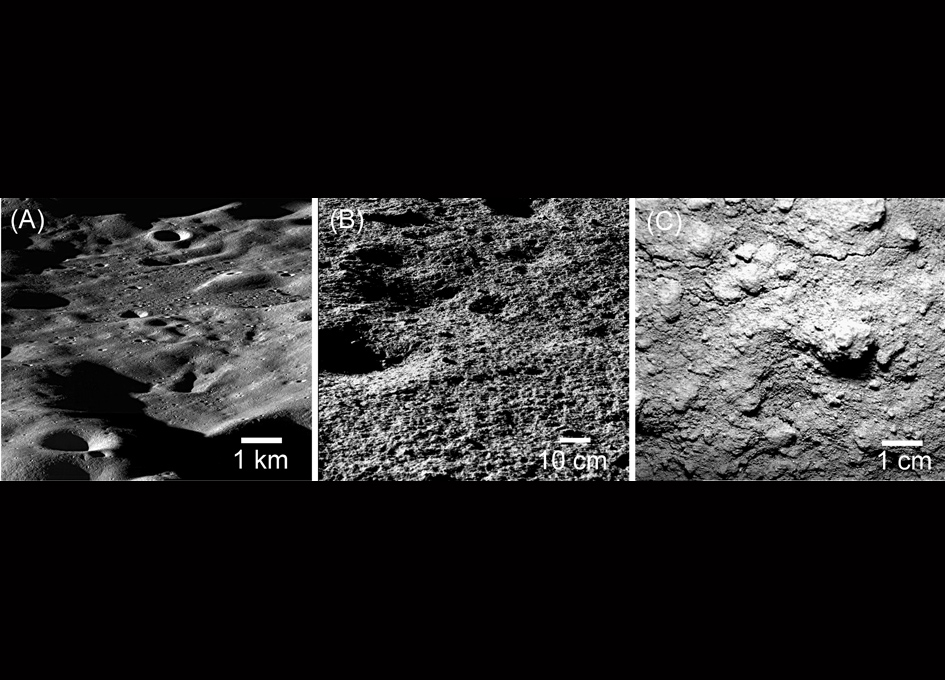
Small shadowed cold traps scattered across the lunar polar regions could contain up to 20 percent of the frozen water on the Moon, making accessing water sources easier for lunar visitors.
“Future lunar rovers may have a hard time driving into a large dark crater with extremely low temperatures. Small cold traps are far more accessible,” Planetary Science Institute Senior Scientist Norbert Schorghofer said. “Approximately 10 to 20% of the permanent cold-trap area for water is found to be contained in these micro cold traps. In terms of numbers, most cold traps are smaller than 1 meter.”
Schorghofer coauthored the new paper “Micro Cold Traps on the Moon” that appears in Nature Astronomy. Assistant Professor Paul O. Hayne of the Laboratory for Atmospheric & Space Physics, and Astrophysical & Planetary Sciences Department, University of Colorado is lead author. Oded Aharonson, a Professor at the Weizmann Institute of Science and PSI Senior Scientist, is also a coauthor.
“I think the way this changes our perspective of water on the Moon is that until now, our efforts were focused on the largest reservoirs situated within the broadest and deepest craters at high latitudes. But we now understand that we expect a large number of much smaller reservoirs of water,” Aharonson said. “The smaller deposits should be more accessible for at least two reasons: the distance to the nearest one from a hypothetical landing site might be shorter; and the deposit would not be surrounded by imposing tall crater rims, but rather much gentler slopes.”
The team used theoretical models and diverse data from NASA's Lunar Reconnaissance Orbiter to study shaded areas where water ice could exist on the Moon's surface.
“Spacecraft that orbit the Moon provide us with snapshots of the surface at a limited spatial resolution. Anything smaller than that has to be inferred statistically. The closer you look the more cold traps you see,” Schorghofer said. “This study combines a suite of data sets with a suite of extrapolation techniques to estimate the actual number and total area of cold traps and permanently shadowed regions over the entire surface of the Moon.”
For example, the team calculated how the instantaneous shadow in a crater for a given height of the Sun above the horizon is related to the extent of the truly permanent shadow in that crater. They then measured the extent of shadows in thousands of images of the lunar surface for various Sun elevations, and combined the measurements with the geometric factors to estimate the total area in permanent shadow. They also calculated the temperatures of these areas to predict in which one's ice can accumulate.
“Accessing water ice deposits on the Moon is enticing for scientific as well as practical reasons: we wish to investigate the chemistry and history of this important material, and we hope to mine it for human utilization. Together with energy from the Sun or another source, frozen ice may be converted to liquid water or even to hydrogen fuel,” Aharonson said.
Reference:
“Micro Cold Traps on the Moon,” P. O. Hayne, O. Aharonson & N. Schörghofer, 2020 Oct. 26, Nature Astronomy [https://www.nature.com/articles/s41550-020-1198-9, preprint: https://arxiv.org/abs/2005.05369].
PSI work was funded by grants from NASA's Lunar Reconnaissance Orbiter mission as well as the Solar System Exploration Research Virtual Institute TREX project.
The Planetary Science Institute is a private, nonprofit 501(c)(3) corporation dedicated to solar system exploration. It is headquartered in Tucson, Arizona, where it was founded in 1972. PSI scientists are involved in numerous NASA and international missions, the study of Mars and other planets, the Moon, asteroids, comets, interplanetary dust, impact physics, the origin of the solar system, extrasolar planet formation, dynamics, the rise of life, and other areas of research. They conduct fieldwork on all continents around the world. They also are actively involved in science education and public outreach through school programs, children's books, popular science books and art. PSI scientists are based in 30 states and the District of Columbia, and work from various locations around the world.
